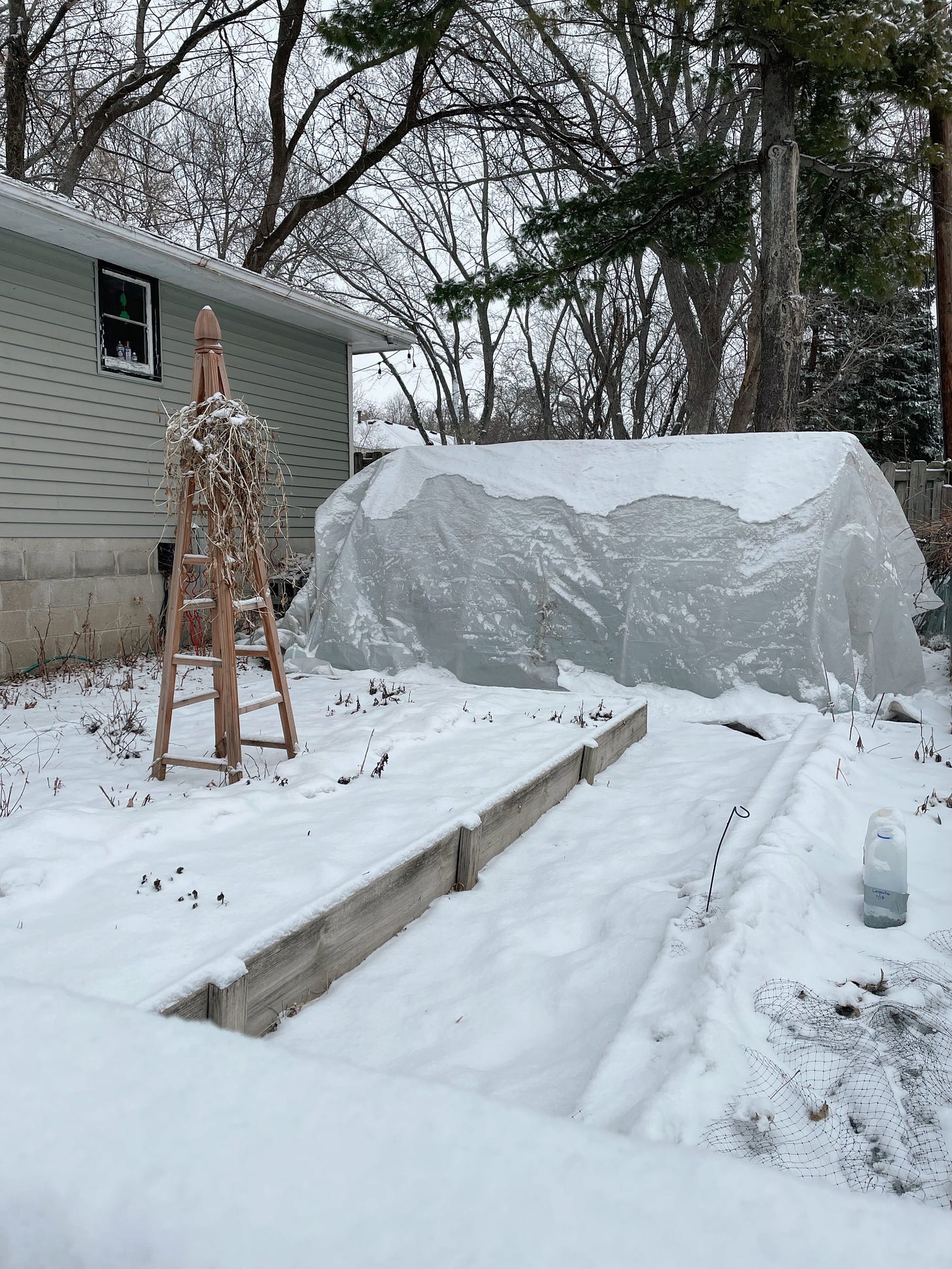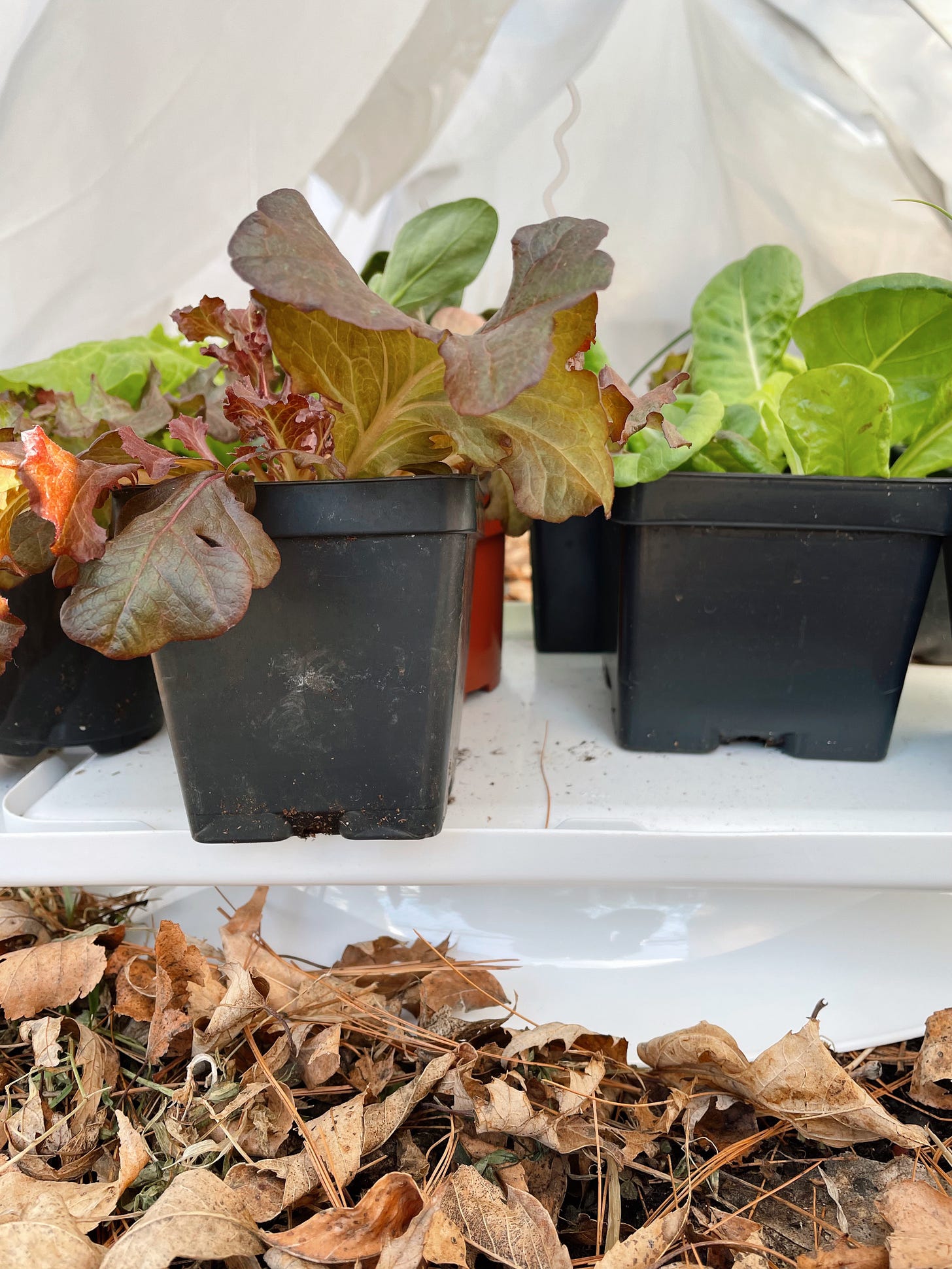It’s February, and as the gardener’s calendar goes, it’s time to put together the polytunnel. Setting up the polytunnel is a winter ritual that signals the start of a new garden season.
A few winters ago, though, I very nearly lost the polytunnel when a destructive wind barreled across the kitchen garden. It was one of those late winter days, when we all cannot bear to think of getting through another cold, sullen day. Wind howled, icicles formed on the eaves of the house, and I stood in the kitchen in despair, knowing my one connection to spring was likely doomed. Eventually, I walked through knee-high snow to check on the plastic structure that soon would hold my plant seedlings. The scene was anything but encouraging, and I spent the next several hours tucking fly away plastic onto the PVC polytunnel structure. By evening, the wind had thoroughly shredded the plastic flaps used to cover the front end of the structure. At 10 pm, I received a text from my kind but concerned neighbor: “Do you know the wind damaged your greenhouse?” Yes, I knew.
You have to understand that the polytunnel doesn’t just provide a bridge between indoor sowing and outdoor gardening; it’s an emblem of hope, a horticultural solace, and I rely on it symbolically and functionally to carry me through winter into spring. So, despite that evening’s relentless wind, I bundled up and walked to the kitchen with my cell phone flashlight illuminating the path ahead of me. I had to see the damage for myself. The structure was in pieces, and so was my heart; all hope for the impending growing season dashed into ripped tendrils of plastic. I did what any heartbroken gardener would do: I turned around and walked back toward the house feeling dejected. Inside, I mustered a somber notification to my husband: “It’s done. Broken.”
Most of the time I consider myself the hero of my own story. But that night, as snow eddied just outside the kitchen windows, my husband abruptly stomped out to the garden and began fixing the structure. He’s like that, even when he is tired, overworked, exhausted. My kind of hero. I followed him, of course.
So there we were, in the kitchen garden during a wind storm, trying to figure out how to preserve the polytunnel. I was ready to walk away, tired of fighting the wind and biting cold temperatures. I stood beneath the PVC pipe gripping plastic sheets that strained against my clutch. He dashed around the garden bed, securing pieces back to the arched frame. “Design failure,” I murmured under my breath. Protectively, he said, “Not a design failure,” as he zig-zagged around the raised garden bed clipping plastic hinges onto the frame.
“Thank you,” I whispered into the wind.
After about thirty minutes of working together, we finished securing the structure enough to let it stand on its own for the night. The next morning I crept outside in the cold, hoping to find it still upright. Miraculously, it survived the end of the storm.
Every time I remove the long plastic tarps from their storage spot in the garage, when I lay the tarps along the yard to let the folded creases relax in the February sunshine, and as I drag each piece through the kitchen garden and onto the piped structure, I think about the night when I lost hope, but my husband didn’t. Gardening, like most of life, happens not just when the sun is shining, but also when twilight arrives and wind gusts chaotically — when it’s really hard to hold onto anything.
This year I’ve made a plan to indoor sow select spring plants, including lettuce, snapdragons, and pansies. The seeds will sit buried in warm soil while grow lights suspended above will illuminate the soil 24 hours a day. (I keep the grow lights on 24 hours a day in the early stage of seed starting). Eventually, green tendrils from germinated seeds will emerge and slowly extend upward, quickly gaining length in those early days. Over the next four to six weeks, I’ll slowly move the grow lights further and further away from the plant tendrils, forcing new plants to reach higher for light. I repeat the cycle — plant, germinate, grow— several times throughout February and March.
I move cold-hardy plants outdoors during the day where they sit in the warmth of the polytunnel and filtered sunshine in late March. At night, I bring the seed trays indoors until the overnight temperatures reach above 50 degrees Fahrenheit. In essence, the polytunnel extends my seed starting process by providing more space to store tender plants before they get put in the ground.
I admit that nearly losing the polytunnel in the windstorm had me wondering if all of the effort to save the structure was worth it. It does take intentional planning and a fair amount of labor in the dead of winter to get it set up. But having a steady gardening partner who dashes through snowflakes and whips around wind in the name of team work makes it feasible. By June, neither of us remembers the hard part. We just enjoy the riot of flowers and food growing in the backyard.
Thanks for reading this month’s essay. If you enjoy my writing, please refer Roots & Vines to people you know, or leave a comment telling me what you thought about this month’s offering.
New! Shop a curated collection of my photographs in the new Roots & Vines online store: Roots & Vines Photos
-Betsy











Such a wonderful write, Betsy. I loved this month’s piece. Can’t wait to follow along throughout spring.